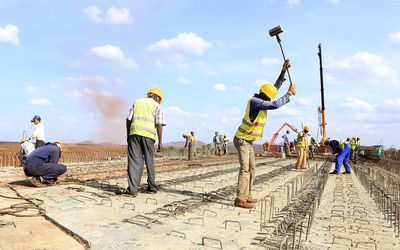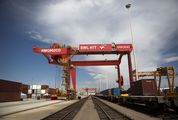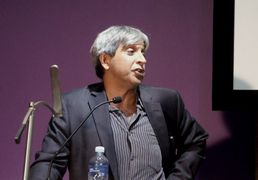Rail the key to unlock growth in Africa
by Bongani Mankewu
2016-06-29 05:48:28.0
LOCAL and international rolling stock manufacturing and leasing companies are investing billions in African rail infrastructure to increase their presence on the continent and tap into rail’s huge growth potential. It reminds me of the discoveries of diamonds on the continent. Brazil was the largest producer of diamonds between 1845 and 1870 with an output of about 200,000 carats a year. After that the SA diamond rush production outstripped that of Brazil many times over, having soared to almost 4-million carats by 1888. SA’s industrial base was built on that diamond rush.
All studies conclude that if Africa had an integrated rail network system the cost of doing business would be reduced since distribution hubs would be linked to production centres. Rail investment is therefore critical to the economic growth and competitiveness of the continent.
There are various methods of financing rail in Africa but the most practical mechanism is sovereign financing, where the success of the project or return on investment is accounted for based not only on internal rate of return but also on the general benefit to the country. This is the most common scheme in Africa since by contrast to corporate financing and project financing, most countries’ creditworthiness allows them only to use international financial institutions such as the World Bank and African Development Bank for their lower interest rates.
However, for finance to be unlocked the industrial capacity of the sovereign state concerned is vital, and the fact is Africa’s industrial technology must be modernised to be able to compete on the global stage. To build an industrial base for the continent we need technological partners, though where brown-field projects are undertaken it might be different as SA as a country has proved it has the capacity to maintain existing rail infrastructure.
We need to build on that proven maintenance capacity by devising innovative ways to control the value chain. This is where African governments need to make use of regulation. Supply chain industrialisation and growth must be the area of focus; policies must maximise local value-add, and spillovers from foreign direct investment, as well as tackle the fickleness of original equipment manufacturers. The nexus between global industrial networks and African economic growth must not be lost due to inability to control the supply chain of rail investments.
In SA, the government’s track record on regulation is patchy because we lack the research capability, or there is a gap between research centres of excellence and the industry. The industrial sector faces being excluded from major infrastructure projects due to noncompliance with the set global standard, and thus faces sky-rocketing prices. This comes at the expense of local industrialisation and compromises sovereign welfare objectives, including job creation.
Nevertheless, SA is the hope for rail excellence in Africa and the country must therefore start to co-ordinate its research centres of excellence. So far not much has been done about the declaration of the AU that SA will be the rail manufacturing hub for the continent. The academic community must also start to support and promote SA’s knowledge base and articulate its relevance to the development of rail infrastructure in Africa while research is undertaken in conjunction with the industry.
It needs to be clear to governments that sourcing finance by means of sovereign financing and identifying technological partners to modernise the industry does not mean contracting out sustained growth for the continent. It is up to the industries to become competitive and build sustained growth; the co-ordination of research centres of excellence capacity will help make Africa competitive; and governments must regulate efficiently, working with various industries.
It should not be forgotten that the diamond rush in SA succeeded because it had state support.
• Mankewu is CEO of the Rail Road Association of SA

Construction workers work at an overpass bridge, a section of the Mombasa-Nairobi standard gauge railway, at Emali in Kenya last October. Picture: REUTERS/NOOR KHAMIS
LOCAL and international rolling stock manufacturing and leasing companies are investing billions in African rail infrastructure to increase their presence on the continent and tap into rail’s huge growth potential. It reminds me of the discoveries of diamonds on the continent. Brazil was the largest producer of diamonds between 1845 and 1870 with an output of about 200,000 carats a year. After that the SA diamond rush production outstripped that of Brazil many times over, having soared to almost 4-million carats by 1888. SA’s industrial base was built on that diamond rush.
All studies conclude that if Africa had an integrated rail network system the cost of doing business would be reduced since distribution hubs would be linked to production centres. Rail investment is therefore critical to the economic growth and competitiveness of the continent.
There are various methods of financing rail in Africa but the most practical mechanism is sovereign financing, where the success of the project or return on investment is accounted for based not only on internal rate of return but also on the general benefit to the country. This is the most common scheme in Africa since by contrast to corporate financing and project financing, most countries’ creditworthiness allows them only to use international financial institutions such as the World Bank and African Development Bank for their lower interest rates.
However, for finance to be unlocked the industrial capacity of the sovereign state concerned is vital, and the fact is Africa’s industrial technology must be modernised to be able to compete on the global stage. To build an industrial base for the continent we need technological partners, though where brown-field projects are undertaken it might be different as SA as a country has proved it has the capacity to maintain existing rail infrastructure.
We need to build on that proven maintenance capacity by devising innovative ways to control the value chain. This is where African governments need to make use of regulation. Supply chain industrialisation and growth must be the area of focus; policies must maximise local value-add, and spillovers from foreign direct investment, as well as tackle the fickleness of original equipment manufacturers. The nexus between global industrial networks and African economic growth must not be lost due to inability to control the supply chain of rail investments.
In SA, the government’s track record on regulation is patchy because we lack the research capability, or there is a gap between research centres of excellence and the industry. The industrial sector faces being excluded from major infrastructure projects due to noncompliance with the set global standard, and thus faces sky-rocketing prices. This comes at the expense of local industrialisation and compromises sovereign welfare objectives, including job creation.
Nevertheless, SA is the hope for rail excellence in Africa and the country must therefore start to co-ordinate its research centres of excellence. So far not much has been done about the declaration of the AU that SA will be the rail manufacturing hub for the continent. The academic community must also start to support and promote SA’s knowledge base and articulate its relevance to the development of rail infrastructure in Africa while research is undertaken in conjunction with the industry.
It needs to be clear to governments that sourcing finance by means of sovereign financing and identifying technological partners to modernise the industry does not mean contracting out sustained growth for the continent. It is up to the industries to become competitive and build sustained growth; the co-ordination of research centres of excellence capacity will help make Africa competitive; and governments must regulate efficiently, working with various industries.
It should not be forgotten that the diamond rush in SA succeeded because it had state support.
• Mankewu is CEO of the Rail Road Association of SA























